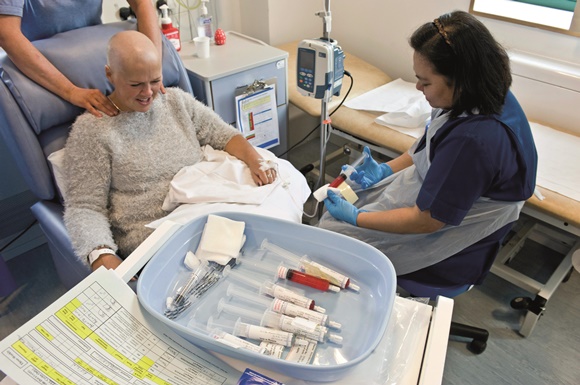This could include having received radiation therapy for a previous cancer, although this is a more significant risk factor for some types than others.
The human T-lymphotropic virus (HTLV-1) has links to leukemia.

The human T-lymphotropic virus (HTLV-1)
People who received chemotherapy treatment for a previous cancer have a higher chance of developing leukemia later in life.

Chemotherapy treatment
This is a solvent that manufacturers use in some cleaning chemicals and hair dyes.
Children with Down syndrome have a third copy of chromosome 21. This increases their risk of acute myeloid or acute lymphocytic leukemia to 2–3%,which is higher than in children without this syndrome.
Having siblings with leukemia can lead to a low but significant risk of leukemia. If a person has an identical twin with leukemia, they have a 1 in 5 chance of having the cancer themselves. Inherited problems with the immune system: Certain inherited immune conditions increase the risk of both severe infections and leukemia.
Childhood leukemia may develop due to the deliberate suppression of the immune system. This might occur following an organ transplant as a child takes medications to prevent their body from rejecting the organ.